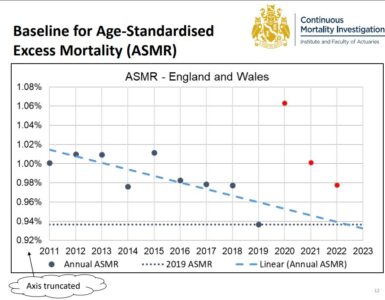There have been many unintended consequences of the COVID-19 pandemic, but perhaps one of the less likely is that we would all become more familiar with the Greek alphabet, and whether theta comes before or after eta. And yet, the attempt by the WHO to neutralise the debate over viral origins by assigning a cascade of Greek letters to the more worrying variants of SARS-CoV-2 has sent us running to Wikipedia or long-discarded primers.
As of 1 July, the latest summary from the ECDC had 11 named variants from Alpha (B.1.1.7 in old money) to Lambda (C.37). Just 13 to go until further improvisation is needed, although the decision to announce Delta Plus (which includes the amino acid substitution K417N) indicates future variant naming may more closely resemble the terminology of smartphones.
However, there is a further operational classification that is often overlooked or at least incompletely understood. And this is the triplet of triplets, namely VUM, VOI and VOC. There are two challenges here – first, what do they actually mean, and second, why are the classifications not universally applied to particular variants.
Let us start with the first – each definition relates to a different level of evidence on the characteristics of the viral variant.
Variants Under Monitoring (VUM) are the earliest indicator where variants have been detected through genomic screening or epidemic monitoring. The evidence is understandably weak, and importantly not assessed by the responsible public health agency, whether that be Public Health England, ECDC or CDC. At the moment, the ECDC has classified 22 variants as VUM, including Lamba, Iota and Zeta.
Variants of Interest (VOI) represent the next level up where evidence from epidemiology, in-vitro studies or genomic potential would imply that the modifications in the variant could result in either a material increase in the transmissibility between persons, greater severity of resulting illness, increased ability to evade immune responses, or any combination of those effects. However, the evidence is still at a preliminary stage and there is significant uncertainty over the magnitude of such impacts. The ECDC has classified a smaller number of variants as VOI; seven in total including Eta, Epsilon, Theta and Kappa.
Variants of Concern (VOC) are the top rank, representing the greatest threat to us all. For these variants, there is clear evidence over impact on transmissibility, severity, immune escape, or any combination of these effects, and only moderate uncertainty over the magnitude of such impacts. The ECDC has so far classified five variants as VOC, including the totemic Alpha, Beta, Gamma and Delta that have received so much airtime since the beginning of the year.
It is the need for each agency to evaluate the evidence in their territory, rather than taking a global perspective, that leads to the possibility for different definitions for a single variant in a given territory. For example, the Iota variant (B.1.526) represented 10-15% of sequenced viruses in North America in March and so receives a classification of VOI from the CDC, whilst the ECDC and Public Health England have this variant as a VUM. Further, the Epsilon variant (B.1.427/B.1.429) represented c15% of sequenced viruses in North America at the turn of the year and is a VOI for CDC and ECDC, but only a VUM for Public Health England.
All rather complicated and messy but then the classification system was designed to help epidemiologists and public health experts, not to facilitate mass media communication. But delving into the details there are two important takeaways for us all. First, it is difficult to establish clear evidence over the impact of the variants. The proportion of sequenced variants is small and highly variable between different countries. This will continue to be the case, and explains the continuing uncertainties over the threat posed by Delta.
Secondly, whilst there is no evidence to suggest that the rate of mutation experienced by SARS-CoV-2 has changed over the course of the pandemic, the number of new variants being tracked has reduced significantly in recent months. Of the 34 under observation by the ECDC, 22 were first identified in December/January during the second wave that afflicted Europe. Only one, Delta Plus, has been identified in the last three months.
That said, more infections mean more viral replication and a greater likelihood of an “improved” variant as well as those that are failures. The question for us all is whether the tightrope act between reduced restrictions, increasing vaccinations and the dampening effects of summer in the Northern Hemisphere on transmission result in another memorable Greek letter. Just like hurricanes, Mu is waiting for its assignment.















